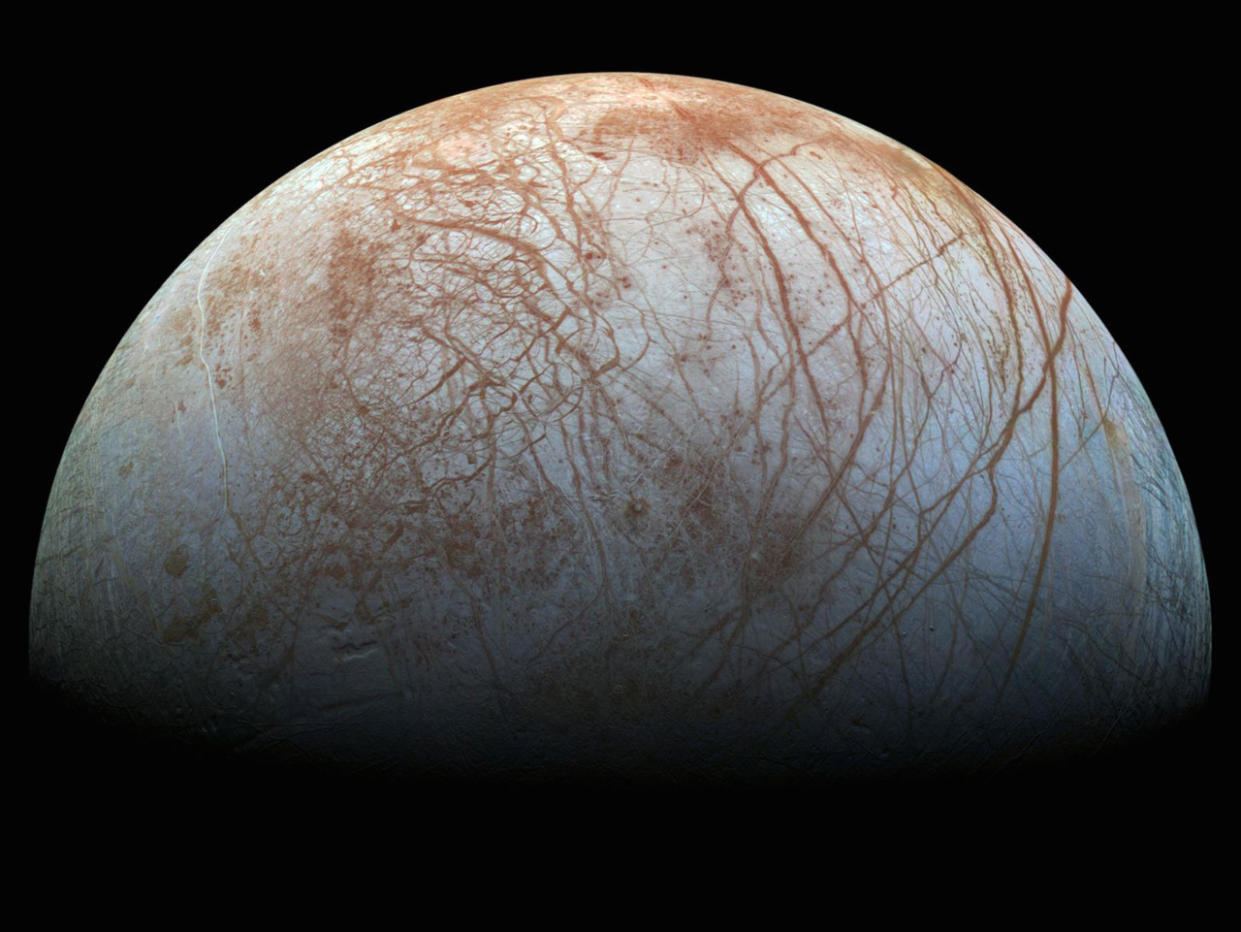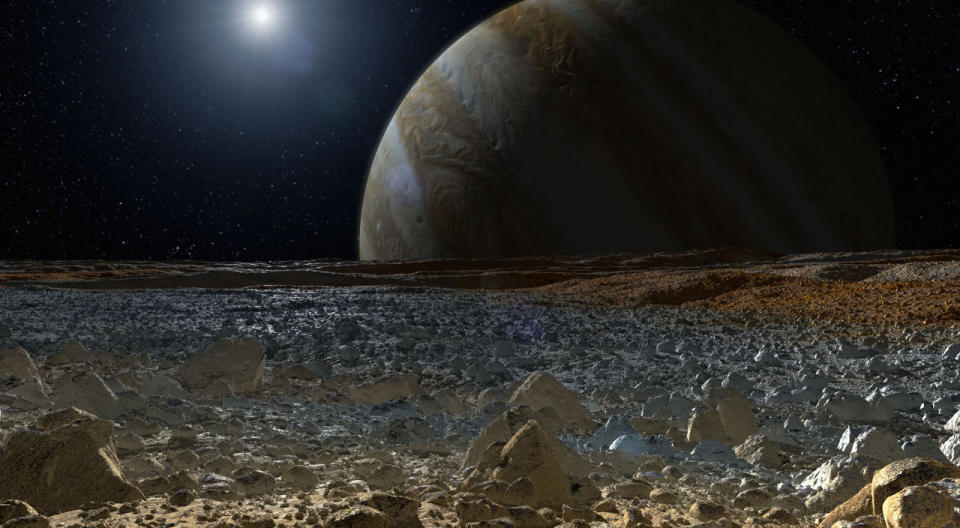Is there life on Europa? Why Jupiter’s moon may be habitable

Further evidence has been found to suggest that a liquid water ocean exists under the icy surface of Jupiter’s moon Europa.
According to new findings by Nasa, released on Monday, the moon throws jets of water out into space.
This discovery, picked up on ultraviolet wavelengths by the Hubble telescope, is incredibly significant for a number of reasons.
In short, it could eventually lead to the answer of one astronomy and indeed civilisation’s oldest questions: is there life elsewhere?
What is Europa?
Europa, one of Jupiter’s 67 moons, was first discovered on January 7, 1610 by Galileo Galilei
It is one of the four known as the Galilean moons, all discovered in the same year by the the Italian astronomer and physicist. These are: Io, Europa, Ganymede, and Callisto.
Greater understanding of the moon wasn’t achieved until the 1970s, when early spacecraft missions to Jupiter began — with Pioneer 10 and Pioneer 1 returning (not particularly clear) images of icy Europa.
In 1979, a Voyager spacecraft mission demonstrated that the ice was cracked in some places — leading to the first speculation about a liquid ocean.
In the 1990s, the Galileo spacecraft, which spent eight years orbiting Jupiter, offered further evidence of this ocean.
Potential for life
Europa has long been considered one of the most likely locations in the Solar System for potential habitability — that is, extraterrestrial life.
Scientists think life could exist in its under-ice ocean, most likely in an environment similar to Earth's hydrothermal vents.
A study this year suggested that even without this volcanic hydrothermal activity, life could still exist.
The Nasa report discovered that Europa produces 10 times more oxygen than hydrogen — making it more similar to earth than previously thought and thus more likely to be capable of producing life.
“We’re studying an alien ocean using methods developed to understand the movement of energy and nutrients in Earth’s own systems,” Nasa scientist Steve Vance, co-author of the study, said at the time.
“The cycling of oxygen and hydrogen in Europa’s ocean will be a major driver for Europa’s ocean chemistry and any life there, just as it is on Earth.”
In 2013, clay-type minerals — that also often carry organic materials — were discovered on the moon, leading to even greater hopes of life.

A simulated view from the surface of Europa (John S Howard/REX/Shutterstock)
Flyby missions
Water jets not only suggest that life there is a possibility of life — but make any potential discovery far more likely.
As lead researcher William Sparks explained this week: “It means we may be able to explore that ocean of Europa for organic chemicals.
“It would allow us to search for signs of life without having to drill through miles of ice.”
A specially designed spacecraft could fly through the jets — recording or even collecting evidence, potentially bringing it back to earth to examine in detail.
While this is far more simple than the complicated and dangerous task of drilling into the moon — it’s by no means easy.
The Europa Multiple-Flyby Mission is scheduled to launch within the next 10 to 15 years, but it is not to find life, but the assess the habitability of life.
And so too is the Jupiter Icy Moon Explorer programme, which was announced in 2012 and is due to launch in 2022.
Curt Niebur, also of Nasa, told the BBC: "We do it in this way for a very simple reason: we know how to measure habitability; we have a lot of experience at doing that; we have a lot of instruments that are very robust and good at doing that.
“When it comes to finding life, we don’t have as much experience. And we actually have an ongoing and vigorous debate in the scientific community as to the best way of going about detecting life on a mission such as this.“
The mission is not without precedent: last year Nasa’s Cassini spacecraft dove into the plumes from Saturn’s moon Enceladus, which also has potential for habitability, picking up ice and dust.
"In situ studies of the plumes have great potential to advance our goal of determining Europa’s habitability and help pave the way for future missions that can directly explore the surface and subsurface in our search for life,” Niebur told Yahoo.

Voyager I images of Jupiter and two of its moons (Nara Archives/REX/Shutterstock)
What sort of life?
"My modest thought about what kind of life might be at Europa involves the kinds of things that we see at heads of thermal vents [on Earth], mainly microorganisms,” Steve Vance at Nasa, told Business Insider.
“But in my bolder moments … I wonder if Europa could have the kind of vigorous biosphere that Earth has that supports larger forms of life.”
That could be small fish or even octopuses — no one can say for sure. Not for now, at least.
“For a long time humanity has been wondering whether there is life beyond Earth,” Nasa astrophysicist Paul Hertz said this week. “We’re lucky enough to live in an era where we can address questions like that scientifically.
“We have a special interest in any place that might possess those characteristics. Europa might be such a place.”
(Credit: ZUMA/REX/Shutterstock)

 Yahoo News
Yahoo News 
